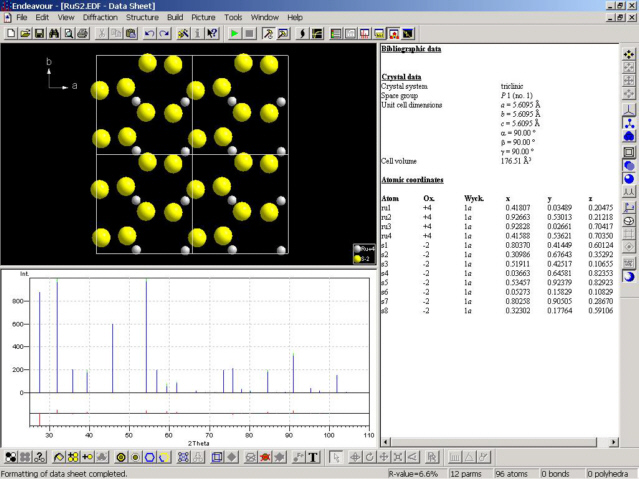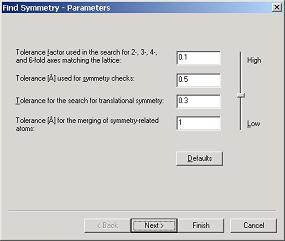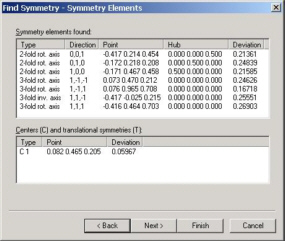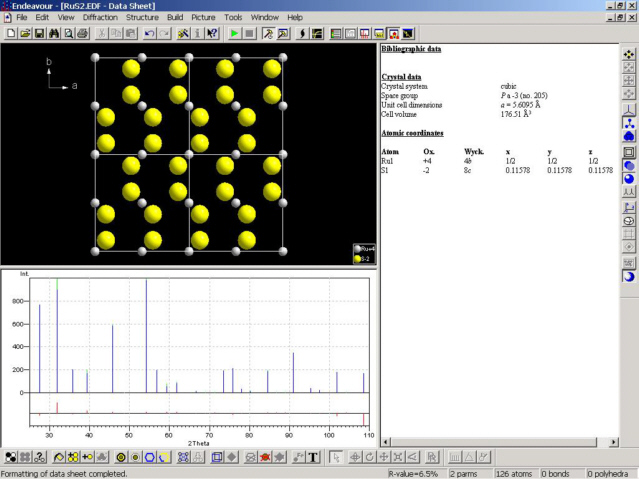|
|
|
|
|
ENDEAVOUR HIGHLIGHTS TOUR |
||
Spacegroup DeterminationIf the space group cannot be determined from the diffraction pattern without ambiguity, the structure must be solved in a common subgroup of several possible space groups or even in P1. Hence, the full space group must be determined once a reasonable structural model has been found. Endeavour provides an easy-to-use tool (SFND/RGS; written by R. Hundt, Bonn 2000) in order to perform this task. As an example, the structure of RuS2 has been solved in P1.
|
||
|
|
||
|
|
||
|
|
||
|
Finally, the space group is applied to the model; the atoms are located on special positions, thus the number of atoms in the asymmetric unit is reduced.
It should be noted that the symmetry-finder in Endeavour can also be used to check whether an already solved crystal structure contains undiscovered symmetry elements and could thus be described in a higher space group ! |
||
|
|
| Page last modified February 6th, 2003 - Copyright © CRYSTAL IMPACT 1997..2003 - All rights reserved |

 First, the tolerance parameters for the search of symmetry elements have to be set;
good default values are provided which allow a successful space group determination
in many cases.
First, the tolerance parameters for the search of symmetry elements have to be set;
good default values are provided which allow a successful space group determination
in many cases. In the second step, the symmetry elements found in the structural model are listed.
In the second step, the symmetry elements found in the structural model are listed. Afterwards, the space group is calculated from this list of symmetry elements.
Afterwards, the space group is calculated from this list of symmetry elements.